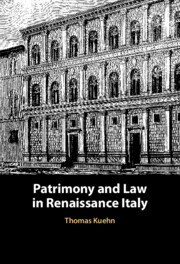
- Cited by 2
-
Cited byCrossref Citations
This Book has been cited by the following publications. This list is generated based on data provided by Crossref.
Tessarolo, Gio Maria 2024. The Politics of societas and the Early Modern State. The Historical Journal, p. 1.
Schmidt, Volker H. 2024. Prolegomena to a genealogy of “society”. European Journal of Social Theory,
- Publisher:
- Cambridge University Press
- Online publication date:
- February 2022
- Print publication year:
- 2022
- Online ISBN:
- 9781009072816
- Subjects:
- Legal History, Area Studies, European History 1000-1450, Law, History, European Studies


